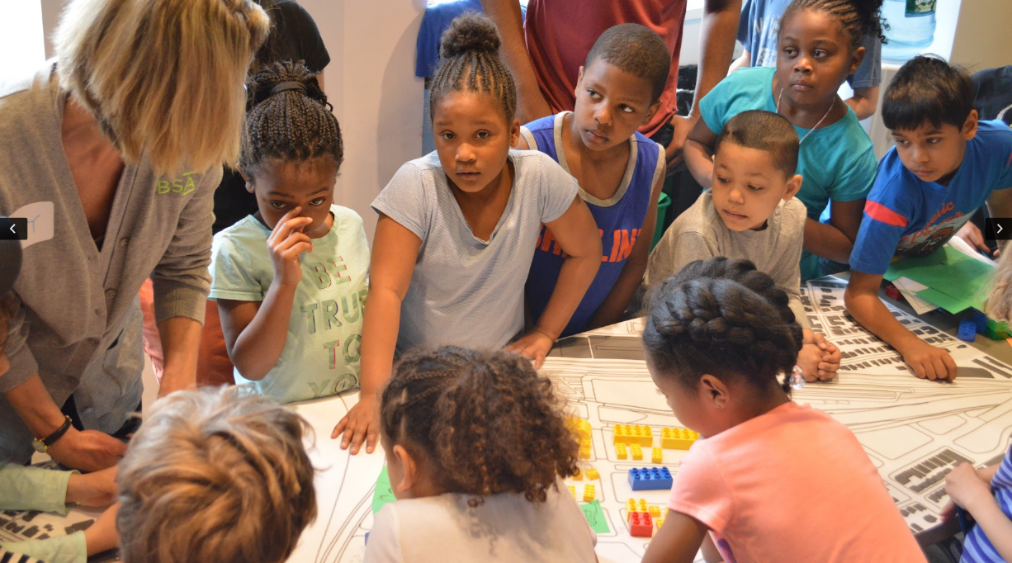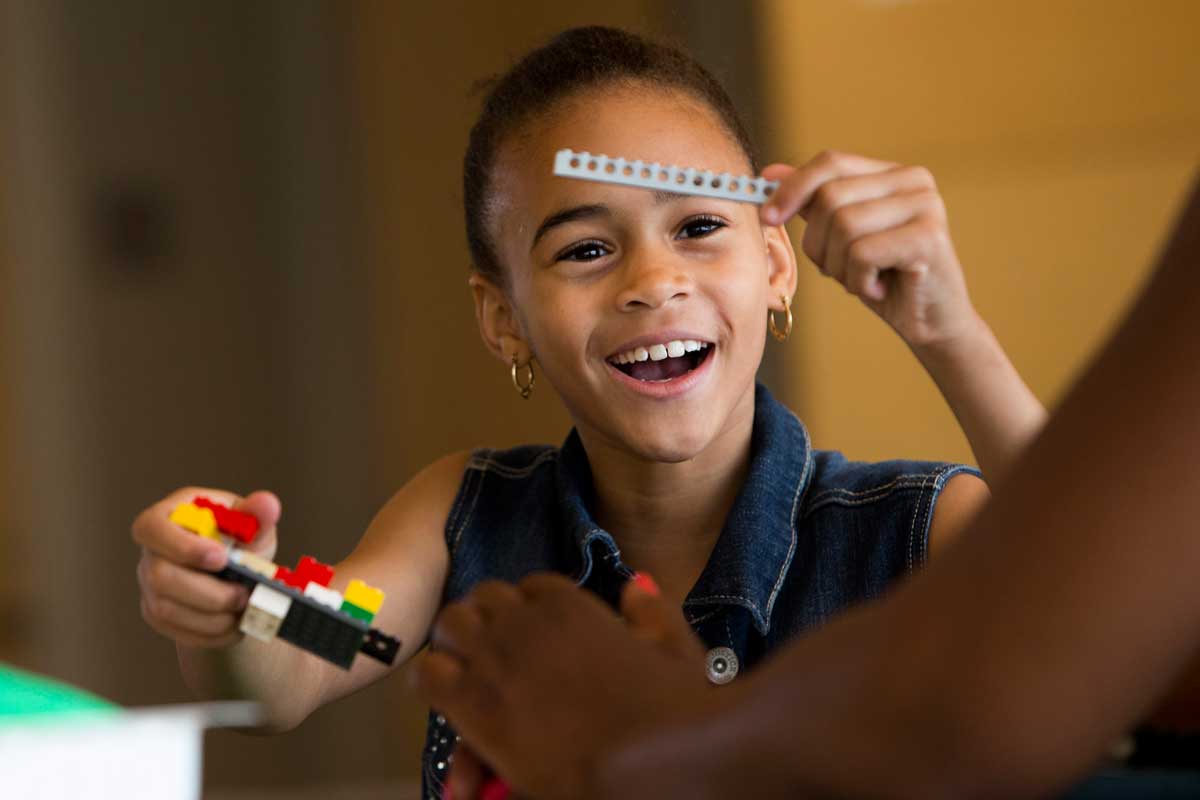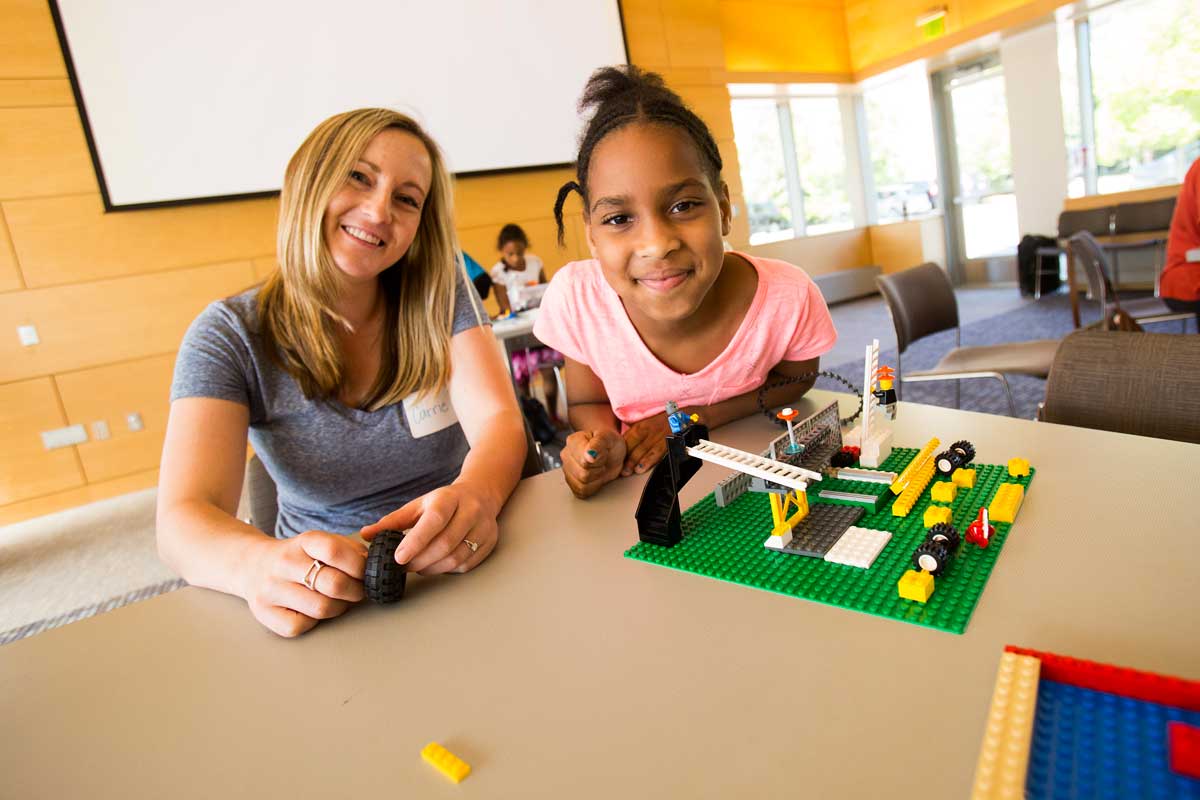Imagine Boston 2030: Making great neighborhoods one LEGO block at a time
As part of ongoing engagement to support Imagine Boston 2030, the BSA Foundation led a series of LEGO City workshops in Mattapan, East Boston, Downtown, Roslindale, and Roxbury over the past six months.
Today, Polly Carpenter FAIA, architect and Director of Public Programs for the BSA Foundation, the sister organization of the Boston Society of Architects/AIA, provides an update on those workshops.
In five Boston neighborhoods, families were recently asked (and began to answer) the question, what makes a good neighborhood? Using LEGO as a design tool, volunteer architects from the BSA Foundation led children ages 5 through 14 and their parents through a series of exercises to tease out residents’ ideas for how to create great places and spaces to live, work, and play. Beacon Yards, a former rail yard in Allston that the city is currently doing a placemaking study for, was chosen as a location where a new neighborhood might take shape.
Each workshop included a group discussion about collective aspirations for Boston in 2030, such as making it a welcoming place for people of all ages with a thriving and equitable economy. Challenges were also explored together. These included concerns about living with storm surges that will threaten the built environment, and managing a growing student population. During team breakouts, young designers assumed the role of future residents (e.g., an artist who tends a garden, a mail carrier who practices Tai Chi, a college president who loves to swim), and advocated on their behalf as the neighborhood was laid out. A variety of questions emerged throughout each session, such as exploring the best and highest land use scenarios (is it OK to sacrifice a little housing in exchange for a large community garden?); zoning (which building type belongs next to one another?); transit (is a bus line needed to connect people to trains?); and sustainability (what happens if the neighborhood is regularly under water in the next 50 years?).
Throughout the series of workshops, participants offered a number of insightful observations, including:
- “Bikes should be allowed on sidewalks, too, so make them wider.”
- “Let’s make sure the Charles is clean enough for people to swim in.”
- “A wide park along the river could act as a buffer during storms.”
- “When we build up, we have more room for open space.”
- “A school in the middle of the neighborhood with a community farm on top will be great!”
- “A community center with inclusive activities and events will help bring neighbors together.”
- “All buildings should have solar panels on the roof.”
- “Let’s put the homeless shelter near the park and make sure it has laundry, a grocery store and a community garden nearby.”
- “Putting the fire station in the center will help people to feel safe.”
Although there were some significant differences in the neighborhoods designed by teams in different communities, common themes emerged. These included providing spaces that can be utilized by multiple generations, ensuring the availability of a variety of housing types with playful places for all ages, and planning for active open spaces and mixed-use buildings where people can walk to do all the things they need to do. The predominant theme involved the need to create a friendly community where people can get to know each other and look out for one another. And that certainly does sound like the best foundation for making a good neighborhood!
LEGO City was created by the BSA Foundation in collaboration with the Imagine Boston 2030 team and was generously supported by Hanley Wood and the Boston Society of Architects/AIA. Approximately 150 people have participated to date. For more photos of the BSA LEGO City Workshops, check out our Facebook album.
All images courtesy of BSA Foundation




